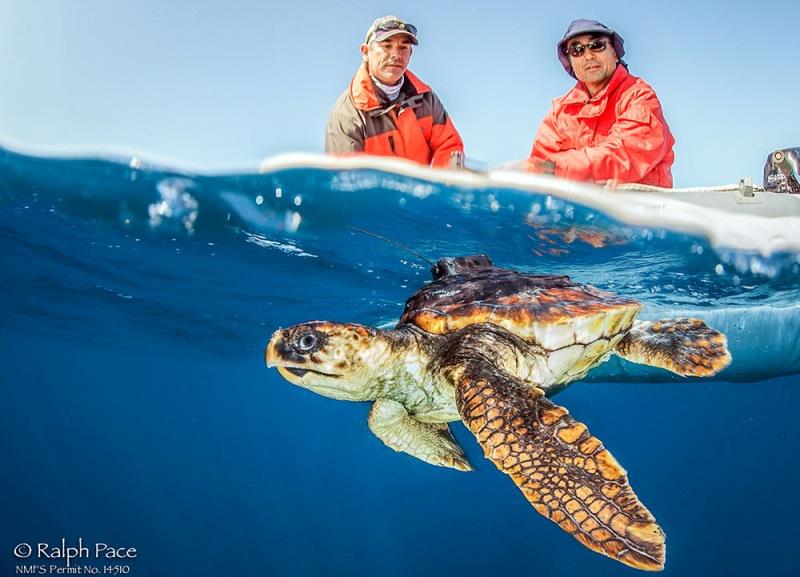
2018 Bycatch Reduction Engineering Program Awards
by NOAA Fisheries 30 Aug 2018 09:07 UTC

The first ever loggerhead sea turtle to be tagged off the U.S. West Coast, along with two of the NOAAFisheries scientists who tagged him, Jeff Seminoff (left) and Tomo Eguchi © Ralph Pace
NOAA Fisheries has awarded more than $2.3 million to partners around the country to support innovative bycatch reduction research projects through its Bycatch Reduction Engineering Program.
Bycatch of various species--fish, marine mammals, or turtles--can have significant biological, economic, and social impacts. Preventing and reducing bycatch is a shared goal of fisheries managers, the fishing industry, and the environmental community.
Working side-by-side with fishermen on their boats we've developed solutions to some of the top bycatch challenges facing our nation's fisheries.
Ongoing regional projects include:
- Creating a bycatch avoidance tool for cod in the Gulf of Maine recreational fishery.
- Use of LEDs to reduce Pacific halibut catch in groundfish trawls.
- A community tagging program aimed at reducing mortality to sharks found near fish aggregating devices in Hawaii.
2018 Recipients Bycatch Reduction Engineering Program
Alaska Longline Fishermen's Association
Project: Adapting towed array hydrophones to reduce interactions between sperm whales and longline gear in Alaska.
Duke University
Project: Testing the applicability of sensory-based bycatch reduction technologies to reduce sea turtle bycatch in North Carolina coastal gillnet and pound net fisheries.
Massachusetts Division of Marine Fisheries
Project: Creating a bycatch avoidance tool for cod in the Gulf of Maine recreational fishery.
Mote Marine Laboratory
Project: Best fishing practices for the Gulf of Mexico reef fish fishery: developing bycatch reduction techniques through refined modeling of electronic monitoring data.
New England Aquarium
Project: Implementation of emerging technology to estimate and mitigate the post-release mortality rate of prohibited sandbar sharks in a rapidly growing shore-based fishery.
Project: Testing a ropeless fishing prototype for eliminating large whale entanglements in pot fishing gear.
Newcastle University
Project: Low-cost solutions to cetacean bycatch in gillnet fisheries.
Pacific States Marine Fisheries Commission
Project: Use of LEDs to reduce Pacific halibut catches before trawl entrainment.
Project: Identifying the optimal level of artificial illumination necessary to achieve maximum chinook salmon escapement rates out a bycatch reduction device integrated into a Pacific hake mid-water trawl.
Pfleger Institute of Environmental Research
Project: Documenting post-release survival and depth distribution of bigeye thresher sharks caught using Linked Buoy Gear.
South Carolina Wildlife Federation
Project: Changing recreational fishing practices through outreach to decrease post-release mortality of South Atlantic deep water species.
University of Hawaii
Project: A community tagging program aimed at reducing mortality to sharks found in association with fish aggregating devices in Hawaii.
Project: Illuminating the shark bycatch post-release mortality black box.
Wild Fish Conservancy
Project: Evaluation of Pound Nets for Stock-Selective Harvest in Lower Columbia River Spring Chinook, Summer Chinook and Shad Fisheries.
Read the 2018 grantees' abstracts